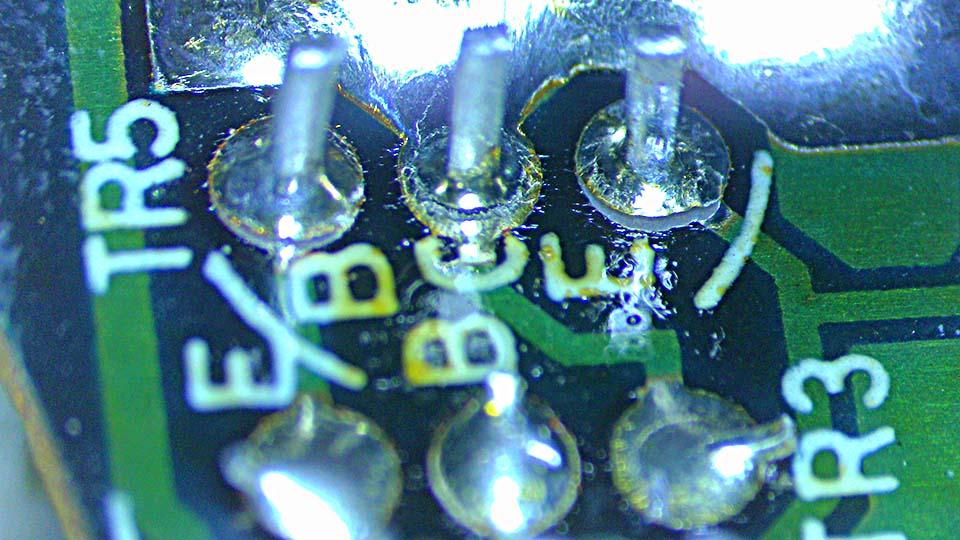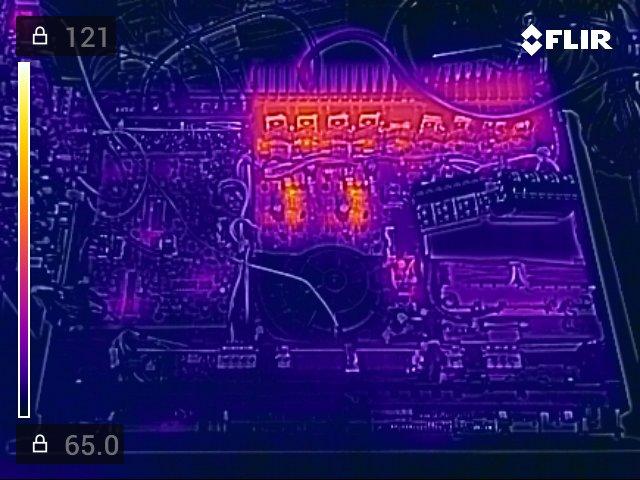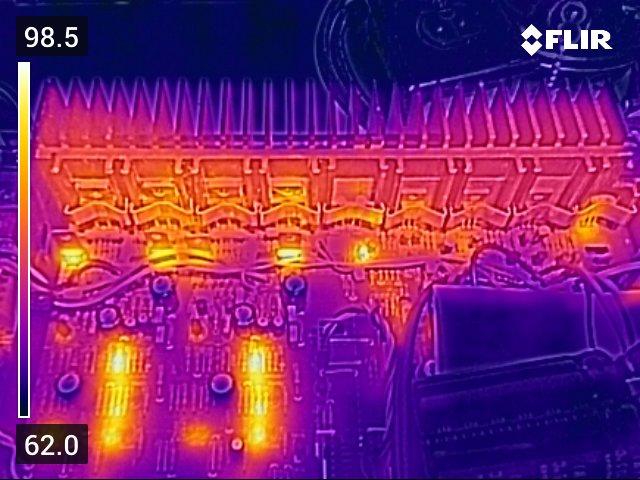Forum Replies Created
- AuthorPosts
-
it seems a big coincidence to me that one is xxx19 and the other xxx18, but maybe I’m thinking too much! Pictures below.
Maybe it is as simple as the serial number starting index from zero and the edition number starting index from one.
Glitch
In the Beolover blog, he writes: “Here is the keypad received back from being professionally coated, this new coating is more permanent – very durable and cannot be removed chemically (by cleaners, etc), and it’s also an excellent match for the frosty appearance:”. However, the exact specification of “profession coated” is not stated. This could be any number of things like powder coat, epoxy, two part urethane, etc. The level of gloss (i.e. flat, satin, semi-gloss) is also missing.
Does anyone recall any mention of the missing details?
This information would be invaluable to those that don’t have multiple keypads to experiment with. Also, considering that the parts are becoming increasingly rare, it would be a shame to lose some to unnecessary experimentation.
Glitch
Is there a way to bypass or clean/recondition the muting circuit switch?
One way to debug mute relay/switch problems is to simply remove (or disconnect) the mute relay/switch. The mute relay/switch grounds out the L and R signals from the cartridge. Without it in the circuit, the phono should still play music (if the problem isn’t something else). Removal also makes it easier to test continuity of the traces/wires between the cartridge and the connector on the back of the phono.
Replacement of the relay/switch is preferable to cleaning. If a replacement isn’t available, cleaning should be done with the least aggressive method that yields results. Of course, cleaning is easier with the part removed.
Glitch
On jpoliv saidIs it possible to polish?
Technically, yes. Practically, no.
I believe that the finish on that is polished aluminum with a clear anodized coating. The anodizing is a very thin, hard, protective layer that is scratch resistant and eliminates oxidation. Any attempt at polishing would likely remove this layer before removing the scratch.
So technically, you could simply polish the panels. However, they would only look good for a short time before the getting scratched again and becoming dull from oxidation. This would start an endless cycle of constant polishing.
The recently polished panel could be top coated with something to protect it. The best choice for this is clear anodizing (which is not a DIY finish). There are many clear spray finishes that could be applied, but it won’t look the same as original.
Personally, I would just live with the scratches. If they really, really bother you… Buy a nicer, pristine example of the same piece of equipment. The cost of the new equipment could be offset by selling the scratched one and the money you saved by not messing with scratch removal.
Glitch
p.s. You can verify the finish by lightly touching the panel with a multimeter measuring ohms. The anodized layer is electrically non-conductive.
FYI, that particular pin came out of panel mount, 2 pin DIN, female connector. These still seem to be reasonably easy to buy, but are of questionable quality. I agree that finding a NOS solder-able part is a long-shot, but I’ve been surprised before by what I’ve found for sale. I think that any possible solution is going to involve creativity, ingenuity, and some quality time with jeweler’s files.
Trying to look at the bright side, the pins from the panel mount connectors have the right the “business end”. The material between the pin fork and what gets soldered to the board is less critical.
On a similar subject, I’ve been thinking about replacing the 3 and 4 pin DIN speaker connectors with “something else”. Considering that the male versions of these connectors are essentially unobtainable, there appears to be a need here for those that are trying to keep the old equipment going. I assume that I’m not the first to consider this. If a solution exists, it would also solve the worn-out 2 pin connector dilemma.
Glitch
Guy: That explanation makes sense. Thanks!
pilatomic: I found a similar speaker connector on my bench. A picture of one of the pins is shown below. HTH.

Glitch
pilotomic: I had a similar issue with a different model Beomaster. The pins in the speaker connectors were worn to the point that they didn’t make good contact. I was not able to find the same style connector as a new replacement. My solution was to buy a different style, board mounted, speaker connector and swap the pins from the new connector into the original connector.
Another possibility is to remove the pins from the old connector and squeeze the pin tips together. I would see this as more of a temporary solution.
I probably have some pictures that would make the above descriptions make more sense. Let me know if you need any additional clarification and I’ll try digging through my photo archive to find them.
As far as the mute relay goes… Do you have any idea why B&O would only mute Speaker1 and not Speaker2 in the BM5500?
Glitch
Filipe: Do your Penta’s switch between standby and “on” (i.e. red to green LED)?
I don’t leave my Beolab Penta’s permanently connected to the mains. While I agree that they were designed to be plugged in all of the time, they are ~40 years old.
I make it a general rule to connect vintage electronics via a switched and fused power strip and keep them totally powered off when not in use. This helps protect the equipment from things like power sags and surges. It helps protect my house from possible equipment failure. At the very least, it reduces the amount of standby power draw.
I don’t think that there is a right or wrong answer here (for properly working equipment). The best answer for anyone will depend on their particular situation.
Glitch
On Evan saidTrying to find an appropriately soft-yellow 3Dp filament now. Most yellows are incredibly intense or even dark (such as most PETG filaments).
I’ve had a few projects where the appearance of the 3D printed part was important. For these projects, I primed, filled, and sanded the parts to hide the “print lines”. I use materials originally intended for automotive repair. The options for the final coat of paint are nearly unlimited. With this strategy you wouldn’t need to worry about finding the right color filament.
You may want to consider dyeing the mid-ranges if they will be exposed in the final design. The light grey color of the stock drivers gives me the impression of sun fade. Dye (as opposed to paint) adds negligible mass to the driver. I’ve used either alcohol or acetone to thin the dye and an air brush to apply multiple thin coats.

I’ve only used black dye, but I don’t see any reason that other dark colors wouldn’t work. Dyeing may also help match the color of the cone to that of the replacement dust cap.
Glitch
Have you made any progress on the midrange rebuild? Did you decide to remove the dustcaps as part of the rebuild?
I think the symmetric design is more aesthetically pleasing than the non-symmetric. Will the final design be ported?
You mentioned paying homage to the original Penta style. Have you considered angling the woofer modules outward? This would have the visual effect of slimming down the side profile of the cabinet. I have no idea of what the sonic impact would be. However, since the overall shape would now be hexagonal, you could call the speaker a CentaHexaPenta ;-).
Glitch
Awesome! Seeing that made my day!
Glitch
I didn’t find a specific reason for the overheating. The first step of this Beomaster repair was to remove the circuit boards and inspect them under a stereo microscope. I like to make repairs to any “mechanical issues” (i.e. cold/cracked solder joints, cracked boards, solder bridges, etc.) before applying power for the first time. I recall fixing what appeared to be shipping damage, but my notes are sketchy. Unfortunately, the quantity/quality of my note-taking can be inversely proportional to my excitement about working on something and I was pretty stoked about digging into the project. 😉
I did take a few pictures of the more interesting discoveries.

Power relay contacts

Broken solder pads on fan control board.


The Beomaster is running at “as expected” temperatures. Warm, but not hot enough for the cooling fan to engage.
Glitch
I spent some time researching and working out a way to send such a fragile piece, and I think I have found a good solution. I will custom make the boxes which should be able to withstand international shipping. The aim was to make a box that doesn’t compress or twist and which weighs less than 1kg in total to make shipping more affordable.
I like the box. Very neat. A minor improvement would be to add some support between the ends of the “U” (i.e. make it structurally more like an “O”). This would reduce the chance that the plinth breaks due to its own mass during a hard impact.
I’m always a bit surprised by how brutal shipping can be. When I pack something for shipping, I imagine it being dropped off a moving vehicle, then sat on by a toddler. 😉
Glitch
Check the metal braces on the underside of the upper cover. The plastic “rivets” that connect the brace to the cover can fail. This lets the cover interfere with the drawer. Also check the screw for mounting the drawer motor. This can rub if the drawer rollers have settled.
Glitch
A very timeless and complete set in my eyes.
Thank you for the kind words.
I think that the styling of the 5500-7000 series has aged quite well. One of my goals is to get B&O equipment into the “public rooms” at my son’s house. My daughter-in-law can be pretty selective about the decor. So far, she has only agreed to a Stage, but I think she is warming up to other options.
It must be hard to go back to a lightweight plastic remote after getting used to a Audio/Video/AV terminal.
Glitch
I am considering doing something similar, my colleagues are highly recommending I just go all-in and remove the dust cap and do it properly.
I always consider the likelihood that I could remove the dustcap and residual glue without damaging the cone. Finding a suitable replacement dustcap is sometimes a problem. I like to install a slightly larger dustcap than what I removed to help hide any evidence that the driver was worked on. This is usually pretty straightforward with woofers, but I’m not so confident with something like a Penta midrange.
Another thing to consider with dustcap removal and shimming is that uneven tension of the surround/spider will undo any shim alignment as soon as the shims are removed. Obviously, drivers with tighter tolerances will be more sensitive to things like this.
One idea that I’ve had is to use a combination of techniques. Combine the segmented clamp/gluing concept with using an inspection scope (stereo microscope) to visually check the coil alignment. I haven’t tried this yet, but will when I have the need to service something that requires high precision.
Glitch
Evan,
I use something similar to clamp the surround. Depending on the particular driver, I’ll run some tests with just the clamp. Once I’m happy with the performance, the surround gets some glue. Sometimes, a segmented clamp is needed so that the surround can be glued a section at a time with a thin needle applicator syringe.
I’m not too surprised to hear that much of this is being done by hand. I’m guessing that the difference between the higher and lesser quality parts has to do with the “end of line” testing and sorting.
Glitch
Cool. I appreciate seeing data even if I don’t understand exactly what it is saying. 😉
Is the testing a driver easy enough where it is possible to test multiple drivers?
I’d be curious about the driver uniformity, especially the refoamed mid-ranges. With some measure of “sameness” you could either pick the best of the batch for your project or sort for best matched pairs.
Glitch
What these tests do not offer are acoustic responses. To test the spectral capability we would need to measure on a baffle with microphones etc. To really understand uniformity, we would need to both Klippel and mic several samples to understand the consistency.
My (possibly bad) assumption is that if two drivers are similar mechanically (displacement response, driver shape, etc.) and electrically (impedance vs frequency, etc.) that they will be similar acoustically.
I think that many people underestimate how easy it is to do a “suboptimal” surround replacement. I’ve found some drivers, especially ones with tight tolerances, can be very finicky to get right. I’ve been able to pick up differences in alignment techniques (centering, foam tension, etc.) with the relatively crude measuring equipment that I have.
Some people make it seem like refoaming is always trivial. Maybe they are right (and I am just not very good at it), but I think it is more likely that they aren’t testing their work. It reminds me of something that happened at work. We had a group of developers that kept reporting that they “hadn’t found any bugs in their software”. I eventually figured out that statement was their way of saying that “they never tried testing their software”. 😉
I’m looking forward to seeing any test results that you are willing to share…
Glitch
I absolutely loved it and would really appreciate any help in identifying said components / machine.
Here is a nice website that has pictures and dates for B&O equipment. This page may be the best one to start on: https://beocentral.com/receivers
Once you have identified the product, https://www.beoworld.ouronlineserver.com/products.asp can be used to find more detailed information about it.
Glitch
- AuthorPosts
